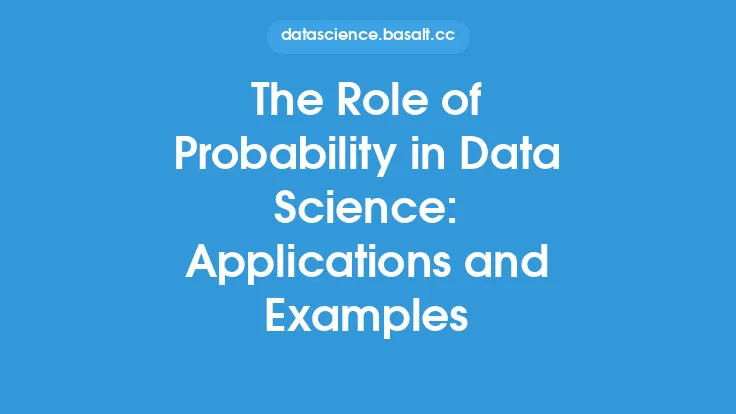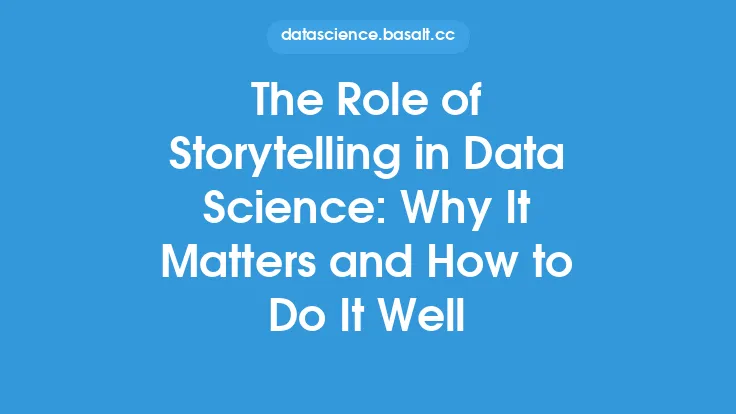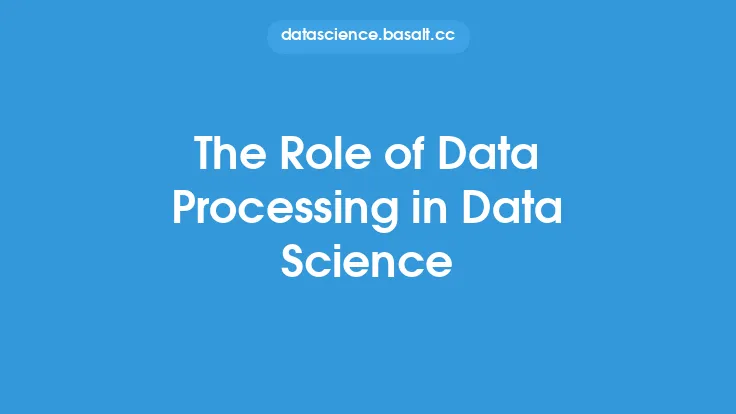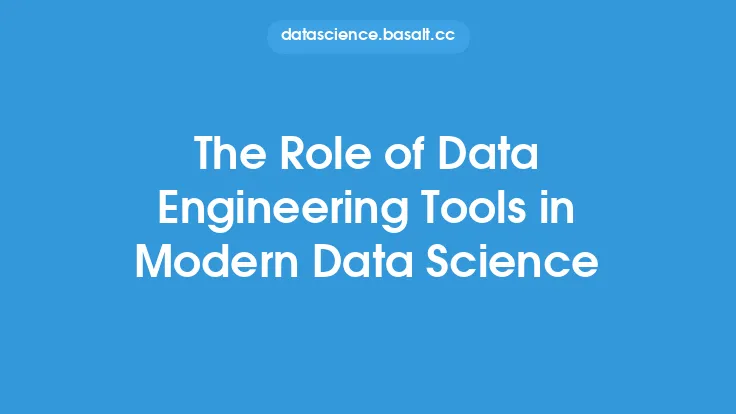Data warehousing plays a crucial role in the field of data science, as it provides a centralized repository for storing and managing large amounts of data from various sources. A data warehouse is a database designed to support business intelligence activities, such as data analysis, reporting, and data visualization. It is a key component of the data science ecosystem, as it enables data scientists to access and analyze data from multiple sources, identify patterns and trends, and gain insights that can inform business decisions.
Introduction to Data Warehousing in Data Science
In data science, data warehousing is used to integrate data from multiple sources, such as transactional databases, log files, and external data sources. The data is then transformed and loaded into the data warehouse, where it can be accessed and analyzed by data scientists. The data warehouse provides a single, unified view of the data, making it easier to analyze and gain insights. Data warehousing also enables data scientists to perform complex analytics, such as predictive modeling and machine learning, by providing a scalable and flexible platform for data processing.
Data Warehouse Architecture
A data warehouse typically consists of three main components: the data source, the data storage, and the data access layer. The data source layer consists of the various data sources that feed data into the data warehouse, such as transactional databases, log files, and external data sources. The data storage layer consists of the database management system that stores the data, such as a relational database or a NoSQL database. The data access layer consists of the tools and technologies that enable data scientists to access and analyze the data, such as SQL, data visualization tools, and data mining algorithms.
Data Warehousing and ETL
Extract, Transform, Load (ETL) is a critical component of data warehousing, as it enables data to be extracted from multiple sources, transformed into a standardized format, and loaded into the data warehouse. ETL involves a series of processes, including data extraction, data transformation, and data loading. Data extraction involves extracting data from multiple sources, such as transactional databases, log files, and external data sources. Data transformation involves transforming the extracted data into a standardized format, such as converting data types, handling missing values, and aggregating data. Data loading involves loading the transformed data into the data warehouse, where it can be accessed and analyzed by data scientists.
Data Warehousing and Data Governance
Data governance is a critical aspect of data warehousing, as it ensures that the data is accurate, complete, and secure. Data governance involves a series of processes, including data quality control, data security, and data compliance. Data quality control involves ensuring that the data is accurate, complete, and consistent, by implementing data validation rules, data cleansing processes, and data normalization techniques. Data security involves ensuring that the data is secure, by implementing access controls, encryption, and authentication mechanisms. Data compliance involves ensuring that the data is compliant with regulatory requirements, such as GDPR, HIPAA, and PCI-DSS.
Data Warehousing and Data Science Tools
Data warehousing is closely integrated with data science tools, such as data visualization tools, machine learning algorithms, and statistical modeling techniques. Data visualization tools, such as Tableau, Power BI, and D3.js, enable data scientists to visualize the data and gain insights. Machine learning algorithms, such as decision trees, clustering, and neural networks, enable data scientists to build predictive models and classify data. Statistical modeling techniques, such as regression, hypothesis testing, and confidence intervals, enable data scientists to analyze the data and draw conclusions.
Benefits of Data Warehousing in Data Science
Data warehousing provides several benefits in data science, including improved data integration, enhanced data analysis, and increased data scalability. Improved data integration enables data scientists to access and analyze data from multiple sources, identify patterns and trends, and gain insights that can inform business decisions. Enhanced data analysis enables data scientists to perform complex analytics, such as predictive modeling and machine learning, by providing a scalable and flexible platform for data processing. Increased data scalability enables data scientists to handle large amounts of data, by providing a distributed and parallel processing architecture.
Challenges of Data Warehousing in Data Science
Data warehousing also poses several challenges in data science, including data quality issues, data security concerns, and data scalability limitations. Data quality issues, such as missing values, data inconsistencies, and data inaccuracies, can affect the accuracy and reliability of the data. Data security concerns, such as data breaches, unauthorized access, and data tampering, can compromise the security and integrity of the data. Data scalability limitations, such as limited storage capacity, limited processing power, and limited network bandwidth, can limit the ability to handle large amounts of data.
Best Practices for Data Warehousing in Data Science
To overcome the challenges of data warehousing in data science, several best practices can be implemented, including data quality control, data security measures, and data scalability planning. Data quality control involves implementing data validation rules, data cleansing processes, and data normalization techniques to ensure that the data is accurate, complete, and consistent. Data security measures involve implementing access controls, encryption, and authentication mechanisms to ensure that the data is secure. Data scalability planning involves planning for future data growth, by implementing a distributed and parallel processing architecture, and ensuring that the data warehouse can handle large amounts of data.
Future of Data Warehousing in Data Science
The future of data warehousing in data science is promising, with several trends and technologies emerging, including cloud-based data warehousing, big data analytics, and artificial intelligence. Cloud-based data warehousing enables data scientists to store and process large amounts of data in the cloud, by providing a scalable and flexible platform for data processing. Big data analytics enables data scientists to analyze large amounts of data, by providing a distributed and parallel processing architecture. Artificial intelligence enables data scientists to build predictive models and classify data, by providing machine learning algorithms and deep learning techniques. As data science continues to evolve, data warehousing will play an increasingly important role in enabling data scientists to access and analyze large amounts of data, and gain insights that can inform business decisions.





